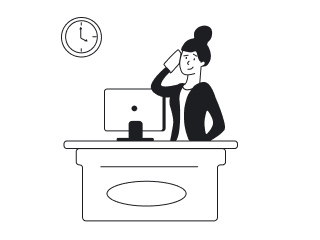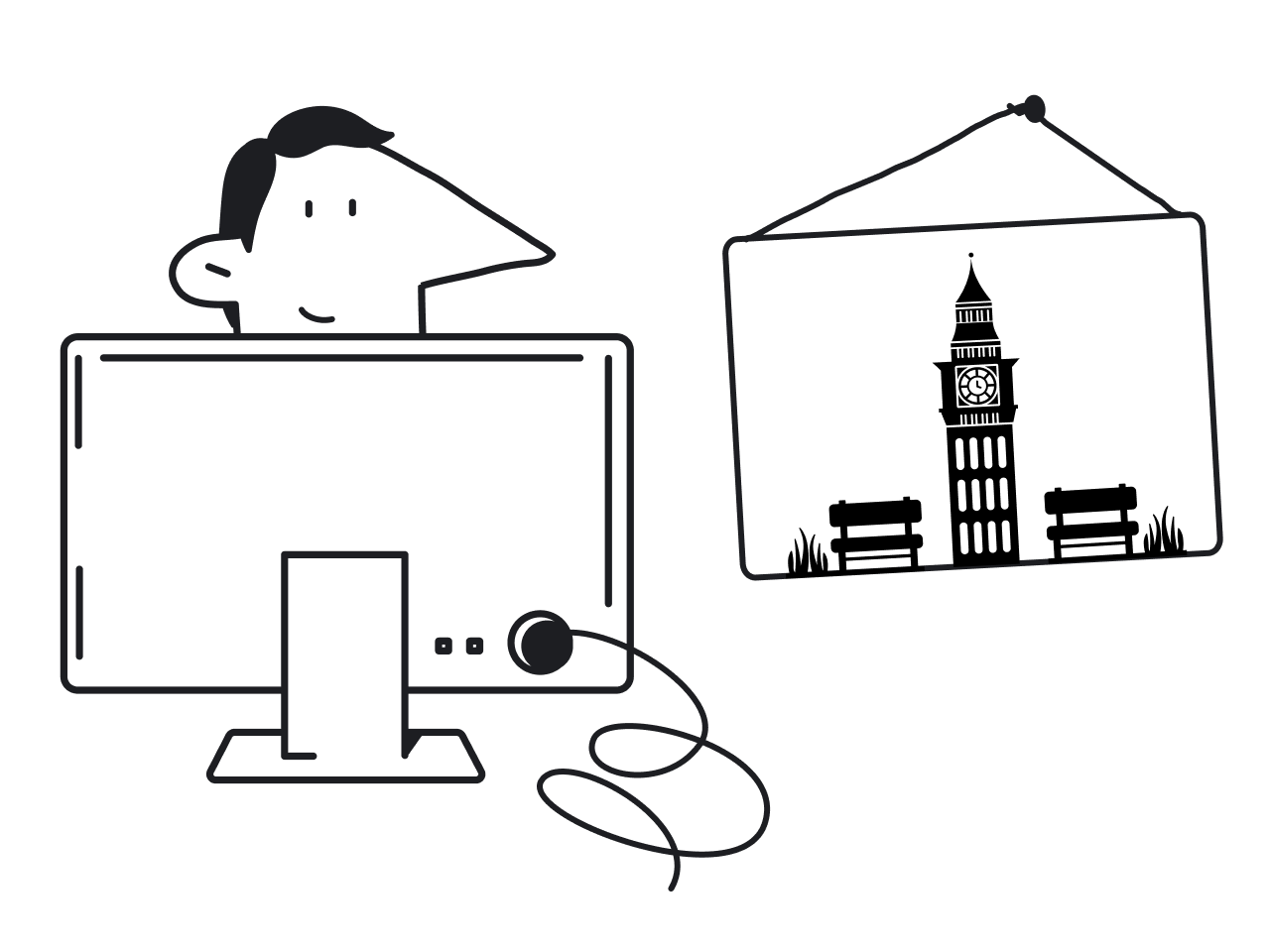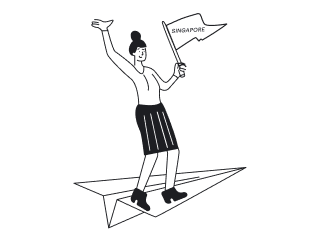Have you ever ordered a design project? If yes, you probably know that successful execution depends on mutual understanding between the designer and the customer.
Usually, to find such common ground, design agencies ask a client to write down the requirements for the project. This document is called a design brief.
At Eleken, we used to follow this model, so we know quite a lot about it. In this article, we will explain what a brief is and how to write it, illustrating everything with design brief examples and templates that you can use. We will also answer the question "Is it possible to work without a design brief?" Spoiler: yes!
But first, let's define the concept and see what to include in your project design brief.
What is a design brief and example?
A brief is a document with a list of questions regarding implementing a specific task. In design, this document is a set of requirements that helps designers understand the client's expectations and also helps to define the direction for design. We can say it is some kind of project overview.
Usually, a good design brief increases the certainty that a result will be fully satisfying, reducing the risk of misunderstandings between the client and the design team, ensuring they are on the same page. The design brief sets the direction for future design and is a base for designers to start work.

Who prepares a design brief?
A design brief is input from the client, as it should reflect their vision and expectations for the project. But we shouldn't forget that creating a creative brief is, first of all, the teamwork of the designer and the customer (often a project manager or a project owner). You don't need to worry about forgetting to mention some vital information in your brief. If the designer you've chosen is a professional, they will never leave you alone with this task.
Typical questions for creative briefs
We have put together a list of questions typical for a design brief that will help you understand the concept and prepare for hiring a designer. When you answer them, you can assume that 90% of the brief is ready! The remaining 10 percent you will gain when discussing it with your designer. Ready? Let's start!
1. What does your company do?
Even if it seems clear, it's best not to assume that the designer knows everything about your company. The deeper the designer understands your business, the more opportunities for creativity they have.
Write in clear and concise language:
Give designers a detailed description to provide an in-depth understanding of your big goals by sharing your product vision or mission.
- What does your organization do?
- What background does your company have?
- What are your goals?
2. What tasks should the design solve? Describe the key deliverables.
This is probably the most crucial question to ask yourself when ordering a design from an agency. Explain what you are trying to communicate with the help of design and why. Set realistic expectations of the state of the project's scope, desired outcome, and objective deliverables, and describe what pain points your product solves for users and how design can help in this regard.
3. What is your target audience?
When writing about your target audience, don't forget to mention your users' age, education, occupation, income, etc. Explain to the designer who these people are, what issues they want to solve, and how they are expected to interact with your product.
4. Who are the competitors, and what differentiates your product from them?
Knowing the main competitors and the unique value proposition of your product is also very useful. The design should reflect the unique advantages of the brand to stand out among rivals.
5. What copy and images will this project include?
The text and images used in the project are essential parts of the design. It doesn't mean you must have all the materials before starting the design process. However, it's worth drafting a plan for visuals and text so that designers can correlate their work with your direction.
6. Do you have references?
- Find some examples/references to the good design or style you like and would want to have for your solution. If you are already on the market, share existing brand visuals like corporate colors, fonts, or images to help the design team get a feel of your product and your brand vision, and analyze it more carefully.
- Show examples that you think would suit your design ideas the most, even if it is the design of your main competitors. By doing so, you set the bar for your expectations.
- Show the designer what you DO NOT like. This will give them a general idea of your tastes and preferences and prevent you from getting frustrated with their work.
7. What are the project timeline and budget?
- Determine your project budget in advance. This way, a designer can optimize the time and resources spent. Determining the budget also allows the designer to decide whether they want to perform this task.
- Give the designer a timeline and set a realistic final deadline. You have to consider the different stages of the design work, such as consultation, concept development, execution, production, and delivery.
- Sometimes, it is simply necessary to complete the work quickly. In such cases, honestly inform the designer in advance.
It is necessary to discuss all the above questions with the designer before you start working. You may think that some of them are trivial and the answers are obvious. Still, the quality of the design depends on the collaborative effort and knowledge of all these details.
Tip: Don’t rely only on the design brief — let your designer talk to key stakeholders
Even the most detailed design brief can't replace direct communication. Complex products usually involve several people who each hold a piece of the puzzle: founders, product managers, marketers, engineers, and customer-facing teams. To avoid misunderstandings and gaps, allow your designer to speak with key stakeholders early on. These conversations help them collect first-hand insights, clarify expectations, and understand the “why” behind the new project — something that no document can fully capture. When designers can hear different perspectives directly, the final solution becomes more accurate, consistent, and aligned with the product’s real needs.
Now that we know what information is important and why, it's time to look at some design brief templates.
Design brief examples
The above questions are fundamental but don't always look exactly like this. The following designef templates contain the main points you should discuss with your designer before starting the design process. Based on them, you can outline the questions in your design brief.
Let’s check out some design brief examples.


Design brief template above is quite detailed, all questions are divided into blocks and spelled out in detail which makes the project's purpose clear and the brief very convenient to fill.

This creative design brief example is well-structured, sets clear business goals for design, and is very laconic. It works well for website design requests.Regarding app design, a brief template has to be more specific regarding UX requirements and include some relevant references.
Regarding app design, a brief template has to be more specific regarding UX requirements and include some relevant references.

The simple template above gathers information about the company, the problem to solve, the client's product, the budget and timeline, and the desired deliverables. It is a good design brief example that gives the right direction for moving forward successfully. However, let's not forget that designing products is a complex and sometimes long-lasting process.
When classic design briefs don't work?
Clear goals and requirements help in the design process. Designers always appreciate clients sharing a brief that can become a North Star in the design process. However, some problems can occur with design briefs.
For example, young startups might not have a product manager on the team, so writing a design brief often falls on the founder's shoulders. For them, writing and submitting effective design requirements can be a very complex task, as founders might not have the right expertise for it. Even though that's absolutely fine, creative teams might wait for ages to get the desired brief.

Another common case is that discussion with the design team often inspires the product owner and changes perspective regarding the initial design requirements. Then, clients' ideas about the desired format and concept of the product may change in the process, too. In that case, there's a need to update a brief, and you may feel your time was wasted on writing the brief.
To write a good design brief, you must collect and structure a large volume of information on the product in one short document. Without prior experience of creating a design brief can be difficult. This is especially true for product design.
Brief is the most effective when you want to order a design project (landing page, website redesign) from a design agency. However, when building a product from scratch, a short brief is insufficient to cover all the requirements for a new product design.
Can you skip the design brief?
A design brief, while highly beneficial in framing a project's scope, objectives, and expectations, is not an absolute necessity to start working with a designer. In fact, many successful collaborations begin without a formal brief. This is particularly true when you're working with experienced designers or agencies who are adept at extracting essential project details through initial consultations and discussions. They can guide you through the process, helping to define goals, understand your audience, and pinpoint design requirements. This approach often leads to a more organic, evolving, and clear understanding of the project, which can be particularly beneficial for startups or businesses still fine-tuning their vision. Ultimately, the decision to use a design brief depends on your specific context, the nature of the project, and the working style of both you and your design partner.
Final thoughts on a design brief from a design agency’s perspective
Understanding the role and structure of an effective design brief is crucial for anyone looking to embark on a design project, whether it's a website, an app, or any other digital product. A brief serves as a roadmap, ensuring that both the client and the design team are aligned on the project's goals, audience, and desired outcomes.
A good design grief should include the following about:
- What does your company do?
- What tasks should the design solve? What are the key deliverables?
- What is your target audience?
- Who are the competitors, and what differentiates your product from them?
- What copy and images will this project include?
- Do you have references?
- What are the timeline and budget?
However, it's important to recognize that the utility of a design brief can vary depending on the project's nature and the team's expertise. In some cases, especially when working with experienced designers or agencies like Eleken, starting a project without a formal brief can lead to a more fluid and adaptive design process. This flexibility often results in a product that truly resonates with its intended audience and fulfills its business objectives.
How Eleken approaches projects without a design brief
Eleken is a product design agency founded in 2015. Over the years, we've grown into a team of UI/UX designers who specialize in creating and scaling SaaS products. Because we work closely with startups and fast-moving teams, we’ve developed a workflow that doesn’t require our clients to produce long, time-consuming design briefs.
Instead, we start every project with a short kick-off meeting. To save clients’ time and ensure transparent communication, this call includes our design lead, Maksym — who has nearly a decade of experience in product design — and the designer who will work on your project from day one.
No middlemen, no layers of management, no information lost along the way.
During the kick-off call, clients share their vision, goals, current product stage, ideas, references, and desired outcomes. Maksym and the assigned designer listen carefully, ask clarifying questions, and translate this conversation into actionable design requirements. This collaborative approach helps us grasp the essence of a product quickly and accurately, without the need for a written brief.
Sometimes, the clients come with references and ideas; other times, we suggest how the product can be designed. At Eleken, we are big fans of the great idea that good products are not created in a vacuum, mindlessly following requirements. Great products are the result of ongoing team collaboration. And we have a whole bunch of them in our portfolio
You have a product to design and want to see us in action? Book a call to get in touch with our team.







.png)


.webp)



